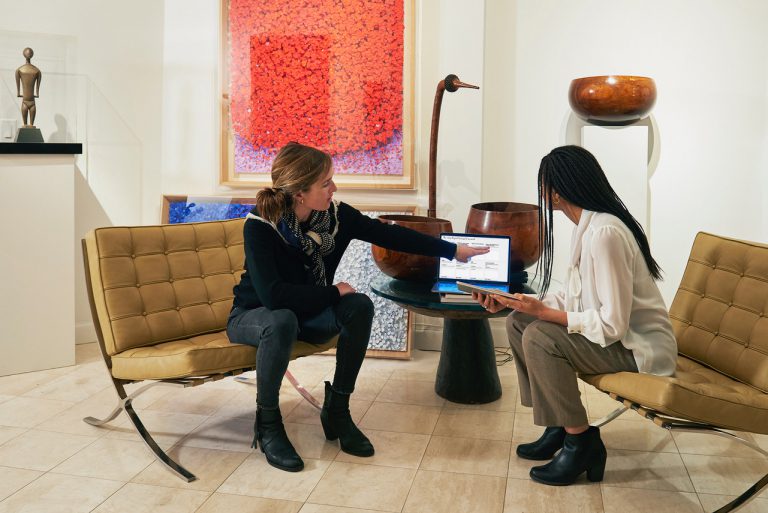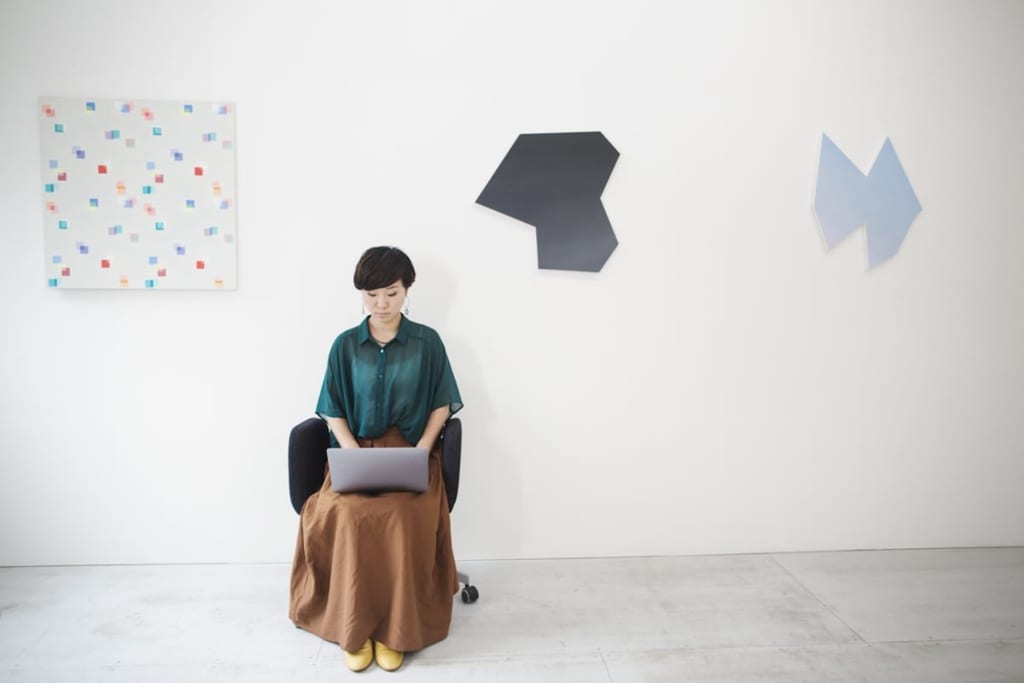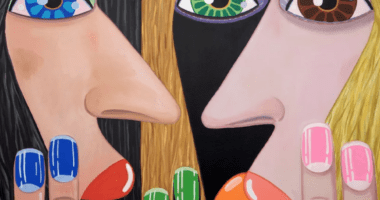
The growth and development of artificial intelligence (AI) technology is one of the defining themes of recent times, and is set to affect almost every aspect of modern life. In business, this is already heralding new opportunities. With the emergence of new AI products and tools, companies are quickly identifying use cases for the technology to help cut costs, expedite production, and propel commerce.
In the art world, galleries are already harnessing their potential to map onto various processes that make day-to-day tasks more efficient. Still, the potential changes brought about by AI’s rapidly developing technology are not without controversy. Critics argue about the loss of a personal touch in certain aspects of art management, and ongoing debate about AI-generated art is also fueling the fire about what is and isn’t considered sellable art.
Yet the benefits of AI for the behind-the-scenes operations at galleries are compelling, providing the potential to strengthen their day-to-day services while simultaneously reducing administrative burdens. Whether automating routine tasks, optimizing communication, or creating richer, more accessible experiences, we share three ways that AI tools can help your gallery operations today.

Anna Ridler, Myriad (Tulips), 2017. Courtesy of A + T Espacio de Fundación Telefónica.
Streamline your content writing process
AI-powered language processing tools like ChatGPT have the most potential to quicken several time-consuming writing tasks. Whether it’s crafting social media captions, newsletters, or press releases, these tools can be trained to adopt the specific voice and tone that represents your gallery’s brand.
For example, when preparing for a show opening, simply provide ChatGPT with the necessary details, such as artist names, the date of the opening reception, and the show name. It can then generate polished press releases, engaging social media captions, and tailored announcement emails that resonate with your audience.
Training AI to deliver content that stays true to your gallery’s brand and voice is also straightforward. Share previous examples of successful social media posts or press releases with the software to “teach” it the nuances of your gallery’s style.
Remember that AI (at least in its current stature) is not yet a one-to-one replacement for the human voice, so it’s always worth iterating and checking over initial versions of the copy it produces. That said, most language AI models learn fast, and users can eventually operate faster with these tools.
A pro tip for beginners is to copy and paste Artsy’s tips for writing press releases into the chat before tasking the AI to write its first press release.

Access new markets with translation tools
The international nature of online art marketplaces such as Artsy, as well as the global scope of events such as art fairs, are proof enough that galleries should not let language be a barrier to making sales or introducing their artists to new markets.
AI-powered translation tools such as DeepL or ChatGPT are revolutionizing how we can communicate across languages and can be easily adapted into a working situation. On Artsy, for instance, the average distance between buyers and sellers is 3,000 miles. Thiscan often mean encountering a few language barriers when using Artsy’s Conversations feature, which enables galleries to connect and converse with new collectors.
Fortunately, AI tools can help. With DeepL, for example, galleries can translate with up to six times more accuracy than leading translating tools, according to the tool’s website. Additionally, the company added an AI-powered writing companion to help users write with clarity and concision—no matter the language.
Beyond one-to-one interactions, a gallery can leverage these tools to increase outreach exponentially. With the click of a button, you can translate your standard newsletters and press releases into several languages, making the gallery’s program accessible to a broader audience in an instant.

Sougwen Chung. Study 24, 2023. Courtesy of HOFA Gallery (House of Fine Art).
Produce compelling visual content easily
Given the primarily visual nature of the art world, the most important aspect of creating an impactful online presence is focusing on quality photography and imagery. When purchasing art online, collectors expect consistent, high-quality images including installation shots. AI can help you create these without the need to hire a team, close the gallery, or even take your works out of storage.
AI tools like Pebbely and Photoroom enable galleries to produce professional-grade images without the need for extensive photo shoots or excessive budgets.
Pebbely is both an AI image generator and a design tool that assists with creating high-quality designs such as installation shots and artwork details in seconds. Other tools such as Photoroom use AI to render studio-quality backgrounds for product images, enabling users to make quick edits and enhancements.
Tools like these can be used to render images which help collectors get an idea of what an artwork may look like in their homes. Artsy’s augmented reality feature, View in Room, allows collectors to virtually “hang” works in their homes, giving them the confidence they need to make acquisitions without ever seeing the work in person.
In the age of Instagram and TikTok, video production is also important, especially as galleries attempt to attract younger collectors. Tools like Descript can make video editing a much swifter process. Artsy’s marketplace data indicates that videos on artwork listings increase the likelihood of commercial actions by more than threefold, underscoring the value of integrating these AI tools into your gallery’s marketing strategy.
Meanwhile, augmented reality features like Artsy’s View in Room allow prospective buyers to visualize artworks in their own homes. This ability can bolster a collector’s confidence in making remote purchases.



